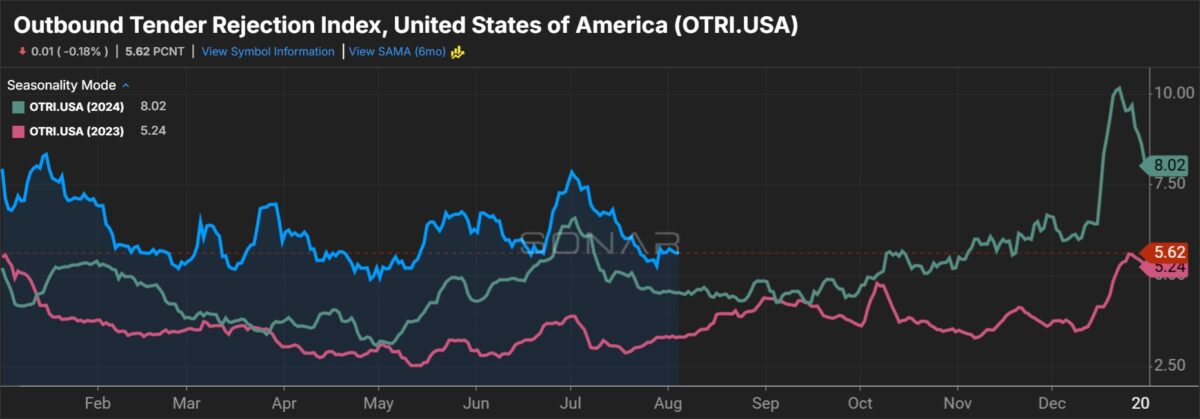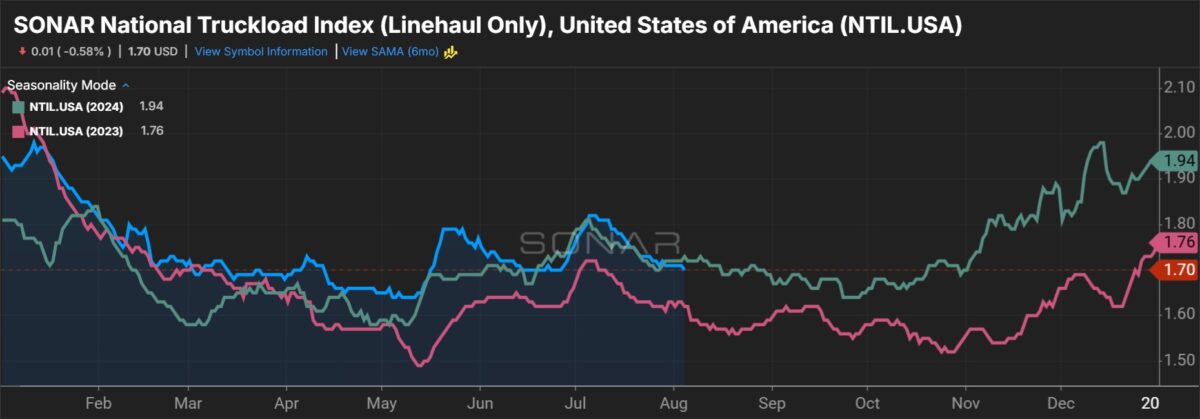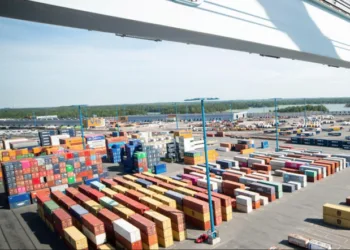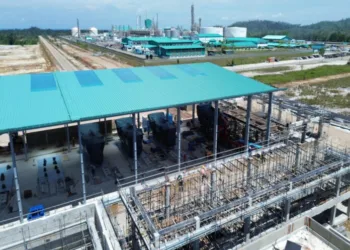The logistics industry continued to expand in July, but the transportation market remains stuck in a “holding pattern,” according to a monthly survey of supply chain professionals.
The Logistics Managers’ Index – a diffusion index in which a reading above 50 indicates expansion while one below 50 signals contraction – returned a 52.6 reading for transportation capacity in the month. While up only 20 basis points from June, the subindex continued to show that any recovery in the freight cycle is unlikely to come from the supply side.
Sentiment around transportation capacity has signaled growth for more than three years now. (The dataset returned neutral readings of 50 twice last year.)
“So long as this metric comes in above 50.0, it is unlikely that we will have a truly robust expansion in the freight market,” a Tuesday report said.
Even with the modest capacity expansion, both transportation utilization (59.5) and transportation prices (63) were up in the month, 6.6 percentage points and 1 point, respectively.
Most truckload carriers have advanced initiatives to better utilize equipment through the protracted downturn, including the removal of tractors from service. July marked the highest utilization reading since January (60.1), with firms upstream in the supply chain, like wholesalers, reporting expansion (60.7) versus no change (50) among downstream retailers.
Transportation pricing has remained firmly in growth mode this year, averaging a monthly reading of 63.2. The pricing index again grew faster than the capacity index, suggesting the freight market is recovering, albeit slowly. (The pricing dataset has outpaced the capacity dataset by an average of 10 points in each month this year.)
Respondents returned a 12-month-forward prediction of 75.5 for the pricing subindex.


The overall LMI came in at 59.2 for the month, down 1.5 points from June. The all-time average for the dataset is 61.5.
Smaller firms – companies with less than 1,000 employees – and upstream companies drove activity in the supply chain during July, with both reporting higher inventories.
Overall, inventory levels (55.6) fell 4.2 points in the month.
Smaller companies reported rapid expansion in inventory (64.8). Most of the smaller respondents are distributors, wholesalers and logistics service providers that reside in “the middle mile of the supply chain,” between ports, manufacturers and retailers. Upstream firms saw expansion (58.5) versus contraction among downstream companies (47.6). A decline in stock levels among retailers was said to be “due to the start-stop nature of tariffs.”
The growth in inventories kept inventory costs (71.9) elevated, albeit 9 points lower than in June.
Warehouse capacity (51.1) was up 3.3 points, crossing back into expansion territory. Capacity was 10 points tighter for smaller companies given their inventory additions.
Warehouse utilization (59.4) fell 2.8 points while warehouse prices (68.3) were unchanged, maintaining a “robust rate of expansion” in the month.
Logistics real estate investment trust Prologis (NYSE: PLD) said on Monday that it is just a matter of time before market rents increase, noting well-capitalized, large-scale tenants are moving forward with leasing plans despite an uncertain macroeconomic backdrop.
The LMI is a collaboration among Arizona State University, Colorado State University, Florida Atlantic University, Rutgers University and the University of Nevada, Reno, conducted in conjunction with the Council of Supply Chain Management Professionals.
More FreightWaves articles by Todd Maiden:
- Beleaguered TL carrier Pamt Corp. names new CEO
- XPO sees ‘massive runway’ to push margins higher
- Schneider National not yet choosing sides on potential changes to railroad landscape
The post Freight market’s ‘holding pattern’ continues in July appeared first on FreightWaves.




















